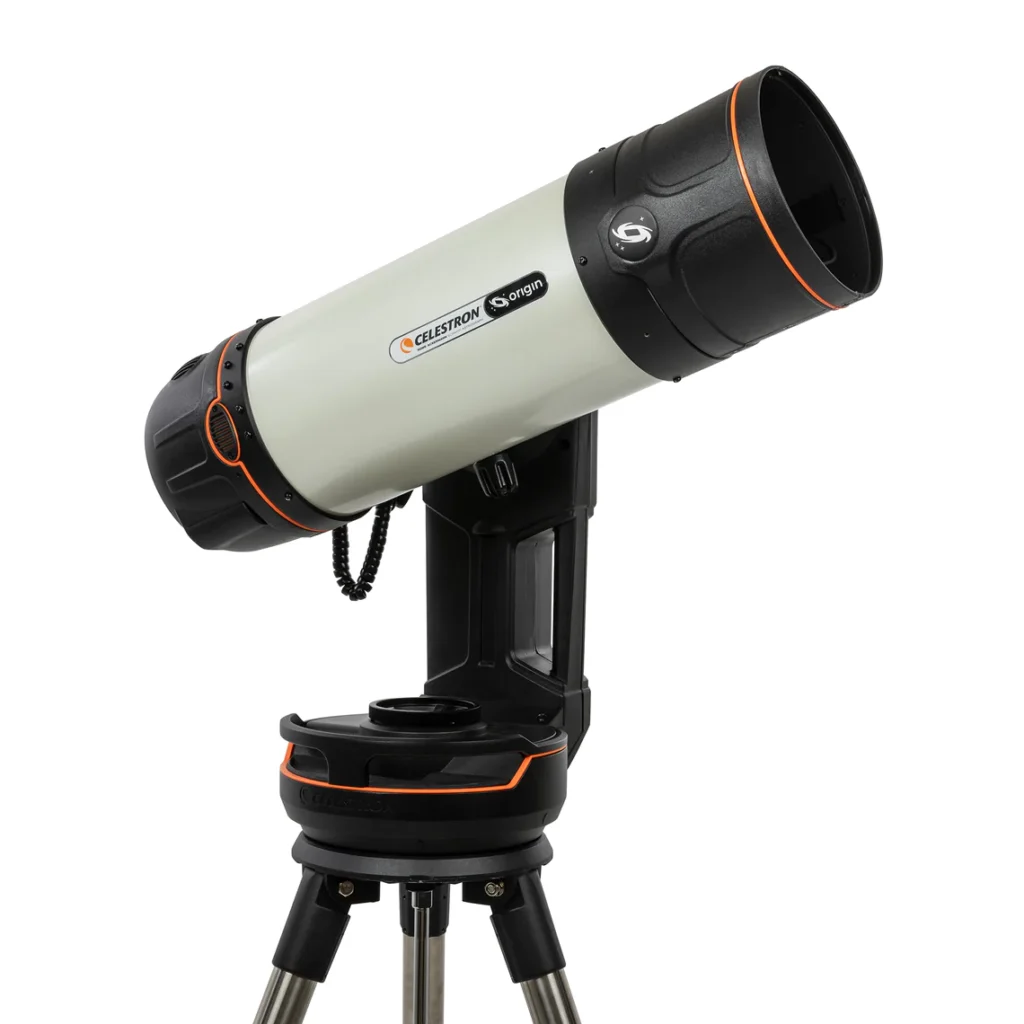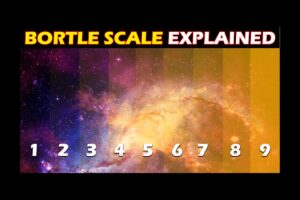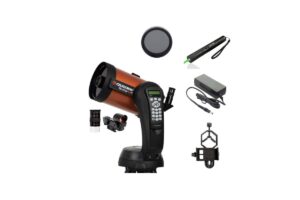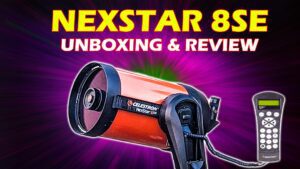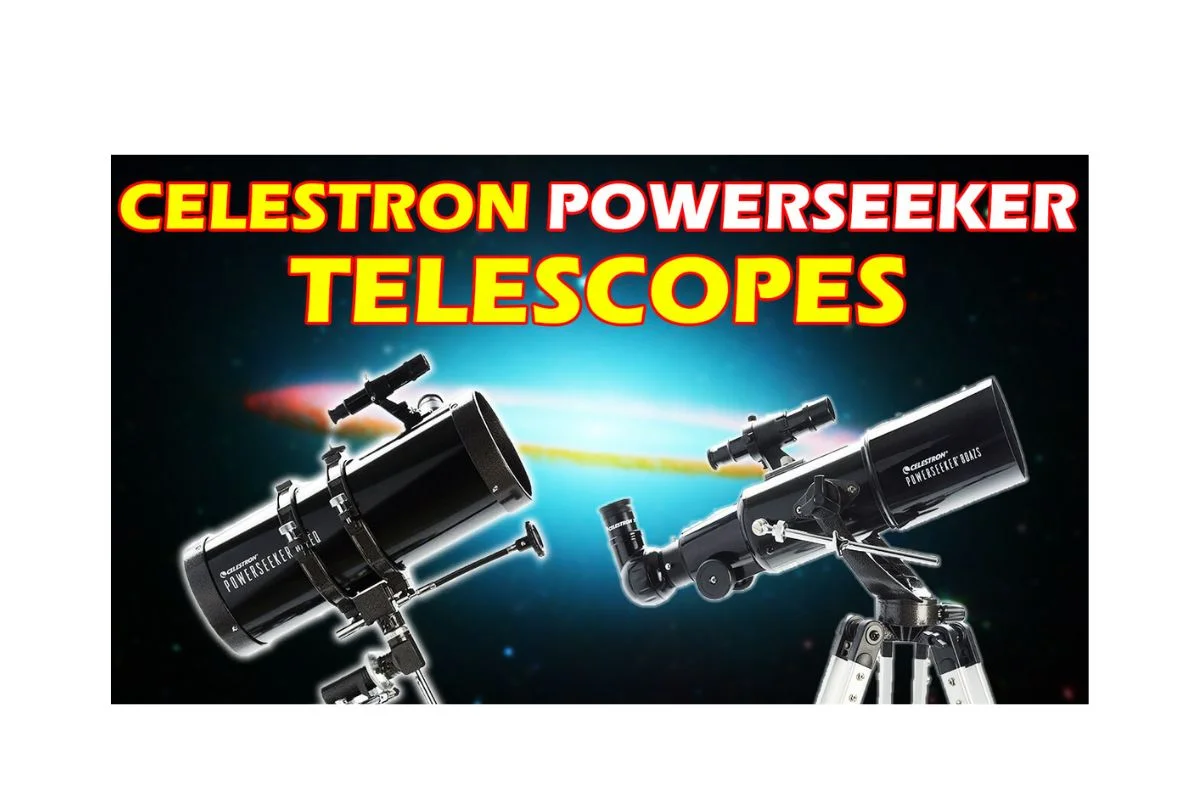
When it comes to telescopes, Celestron is the number one brand. They have a wide range from very basic beginner telescopes to the most advanced expensive telescope. One such series from Celestron is the Celestron PowerSeeker telescopes series.
This series of Celestron is mostly aimed toward the beginner level of astronomers. In this series, there are 9 telescopes. The smallest aperture size is 50mm & biggest aperture size is 127mm. Out of these 9 telescopes, some telescopes have the same aperture size but different types of mount.
For example, in the Celestron PowerSeeker telescopes series, you will find Powerseeker 70AZ which has the alt-azimuth mount, and PowerSeeker 70EQ which has an equatorial mount. By the way, if you want to know about different types of mounts and some more basics of astronomy, then check out this playlist on the channel.
So, if you count according to aperture size, then there are 6 telescopes in this series. 60, 70 & 80 mm aperture telescopes are available in both AZ – EQ mounts.
As this series of telescopes are aimed at beginners the prices of the telescopes are in very affordable ranges. Basically, the telescopes in the series are for beginners to just get started with the minimum budget.
To keep the cost down and make them affordable, telescopes use spherical mirrors instead of parabolic ones. Usually, spherical mirrors are less accurate in giving you a clear sharp image. You will notice spherical aberrations in the image with a spherical mirror. If you want to know the difference between these two types of mirrors then subscribe to the channel, we will post a detailed video about this topic in the future.
Now let’s see the telescopes in this series.
Celestron PowerSeeker 50AZ.
SPECIFICATIONS
| TYPE | Refractor |
| APERTURE | 2-inch (50mm) |
| FOCAL RATIOS | f/12 |
| FOCAL LENGTH | 600mm |
| MOUNT | Alt-Azimuth |
| Lowest Useful Magnification | 7x |
| Highest Useful Magnification | 118x |
| WEIGHT | 3.6 lbs. (1.6 kg) |
REASONS TO BUY
+ Suitable for observation on land as well as stargazing.
+ Suitable for kids
+ Generous 600mm focal length.
+ Tripod, software and manual included.
REASONS TO AVOID
– It is a very basic telescope
TODAY’S BEST DEAL
This is a refractor-type telescope. It has a 50mm aperture of around 2-inches. Its focal length is 600mm and its focal ratio is 12. The highest useful magnification of this telescope is 118 times and the lowest useful magnification is 7 times. This is a very basic telescope and is suitable for people who are on a very tight budget. The telescope is best suited for kids who are just starting with astronomy.
As the aperture is just 50mm there are very limited things you can see with this telescope. With this telescope, you can see the moon, planets, and some bright objects.
Celestron PowerSeeker 60AZ & 60EQ.
SPECIFICATIONS
| TYPE | Refractor |
| APERTURE | 2.36-inch (60mm) |
| FOCAL RATIOS | f/12 |
| FOCAL LENGTH | 700mm |
| MOUNT | Alt-Azimuth |
| Lowest Useful Magnification | 8.57x |
| Highest Useful Magnification | 142x |
| WEIGHT | 7 lbs. (3.18 kg) |
| TYPE | Refractor |
| APERTURE | 2.36-inch (60mm) |
| FOCAL RATIOS | f/15 |
| FOCAL LENGTH | 900mm |
| MOUNT | Equatorial |
| Lowest Useful Magnification | 8.57x |
| Highest Useful Magnification | 142x |
| WEIGHT | 10 lbs (4.5 kg) |
REASONS TO BUY
+ Good for observation of the moon.
+ It is very affordable
REASONS TO AVOID
– You can get a better telescope by paying slightly more
TODAY’S BEST DEAL
This is also a refractor-type telescope. It has an aperture of 60mm. Though these telescopes have the same aperture size they have slightly different specifications. Such as 60AZ has a focal length of 700mm & focal ratio of 12. However, 60EQ has a focal length of 900mm & focal ratio of 15.
The optics of the telescope is good and is coated for maximum throughput. Both of these telescopes are very portable. The 60AZ with alt-azimuth mount weighs around 3.5kg and the 60 EQ with equatorial mount weighs around 4.5kg
A 60mm telescope is enough for observing the moon. You can see good images of the moon with this telescope. When it comes to observing planets the performance is average. For deep space, this telescope is not at all suitable but you might be able to see some bright deep space objects.
Celestron PowerSeeker 70AZ & 70EQ.
SPECIFICATIONS
| TYPE | Refractor |
| APERTURE | 2.75-inch (70mm) |
| FOCAL RATIOS | f/10 |
| FOCAL LENGTH | 700mm |
| MOUNT | Alt-Azimuth |
| Lowest Useful Magnification | 15x |
| Highest Useful Magnification | 241x |
| WEIGHT | 5.84 lbs (2.65 kg) |
REASONS TO BUY
+ Good Optics.
+ Color accuracy and sharpness of images
REASONS TO AVOID
– Not suitable for deep space
TODAY’S BEST DEAL
Both of these telescopes are exactly the same the only difference between these telescopes is the mount they use. The telescope has an aperture of 70mm around 2.75-inches. It has a focal length of 700mm and a focal ratio of 10. The highest useful magnification of these telescopes is 165 times and the lowest useful magnification is 10 times.
The optics of the telescopes are good and will give you better images with color accuracy and sharpness.
The aperture of the telescope is big enough to see planets. With this telescope, you can see the moon, Saturn’s rings & Jupiter’s moons. You can see some deep space objects but for the deep space, objects don’t expect too much from this telescope.
Celestron PowerSeeker 80AZ & 80EQ.
SPECIFICATIONS
| TYPE | Refractor |
| APERTURE | 3.14-inch (80mm) |
| FOCAL RATIOS | f/5 |
| FOCAL LENGTH | 400mm |
| MOUNT | Alt-Azimuth |
| Lowest Useful Magnification | 11x |
| Highest Useful Magnification | 189x |
| WEIGHT | 10 lbs. (4.5kg) |
| TYPE | Refractor |
| APERTURE | 3.14-inch (80mm) |
| FOCAL RATIOS | f/11 |
| FOCAL LENGTH | 900mm |
| MOUNT | Equatorial |
| Lowest Useful Magnification | 11x |
| Highest Useful Magnification | 189x |
| WEIGHT | 19 lbs (8.62 kg) |
REASONS TO BUY
+ Good well coated Optics
+ Can be used for planets and some bright deep space objects
+ Very good telescope for beginners
REASONS TO AVOID
– It is a little bit heavier for the size
TODAY’S BEST DEAL
These are refractor-type telescopes. Both of them have the same aperture of 80mm but different specifications. The 80AZ model has a focal length of 400mm and a focal ratio of 5. Its highest useful magnification is 189 times and the lowest useful magnification is 11 times.
However, the 80EQ model has a focal length of 900mm and a focal ratio of 11. This is an achromatic doublet refractor telescope
The optics of the telescope is well coated and good. With this telescope, you can see the moon, planets, and bright objects like double stars. You’ll be able to see the phases of Venus and Mercury, lots of detail on the Moon, and perhaps the ice caps on Mars.
Considering the price and performance these are great beginner telescopes.
Celestron PowerSeeker 114EQ.
SPECIFICATIONS
| TYPE | Newtonia Reflector |
| APERTURE | 4.49-inch (114mm) |
| FOCAL RATIOS | f/7.8 |
| FOCAL LENGTH | 900mm |
| MOUNT | Equatorial |
| Lowest Useful Magnification | 16x |
| Highest Useful Magnification | 269x |
| WEIGHT | 19 lbs. (8.6 kg) |
REASONS TO BUY
+ Better performance.
+ Cans see a wide variety of objects from the moon to deep space.
+ Very affordable.
REASONS TO AVOID
– Mount is not good.
TODAY’S BEST DEAL
This is a Newtonian reflector-type telescope. It has an aperture of 114mm around 4.5-inches. Its focal length is 900mm and the focal ratio is 7.8. The primary mirror of the telescope is spherical. But because of the long optical tube, most of the aberrations will not be noticeable.
The optics of the telescope is good and well coated. The telescope has a big enough aperture to collect more light. With this telescope, you can see the details of the moon such as craters and ridges. You can see Jupiter and its moon, Saturn’s rings phases of Venus. In the deep space objects, you can see the star cluster, Andromeda galaxy Orion nebula. Overall the telescope performance is good.
The telescope comes with a German equatorial mount. The quality of the mount is not up to the mark but if you use the optical tube with another sturdy mount you will get a great result from this telescope.
Celestron PowerSeeker 127EQ.
SPECIFICATIONS
| TYPE | Newtonian Reflector |
| APERTURE | 5-inch (127mm) |
| FOCAL RATIOS | f/7.87 |
| FOCAL LENGTH | 1000mm |
| MOUNT | Equatorial |
| Lowest Useful Magnification | 18x |
| Highest Useful Magnification | 300x |
| WEIGHT | 22 lbs. (10 kg) |
REASONS TO BUY
+ Big aperture for the minimum price.
+ Good for deep space
REASONS TO AVOID
– Uses Spherical mirror
– Gives chromatic aberrations
TODAY’S BEST DEAL
This is also a Newtonian reflector telescope. It has an aperture of 127mm around 5-inches. Its focal length is 1000mm and the focal ratio is 7.8. Its highest useful magnification is 300 times & the lowest useful magnification is 18 times.
The optics of the telescope are good and well coated. As it has a 5-inch aperture telescope, the telescope falls in the category of beginner-level deep space observation telescope. The telescope uses a spherical mirror, so this telescope might give you some aberrations. It doesn’t lower the quality of the telescope overall, but it does mean that you’ll need to put in a little more effort to get a clear image.
With this telescope, you can see the moon, Saturn & its rings, Jupiter, and mercury. In deep space, you will be able to see the Orion nebula, lagoon nebula, and bright galaxies. Considering the price of the telescope overall this telescope is great for the things it offers.
So that’s it these are some of the telescopes in the Celestron PowerSeeker telescopes series of Celestron.
Should you go with the Celestron PowerSeeker telescopes?
If you are on a tight budget then yeah, but if you can stretch your budget then you can find some good telescopes from Celestron itself.










